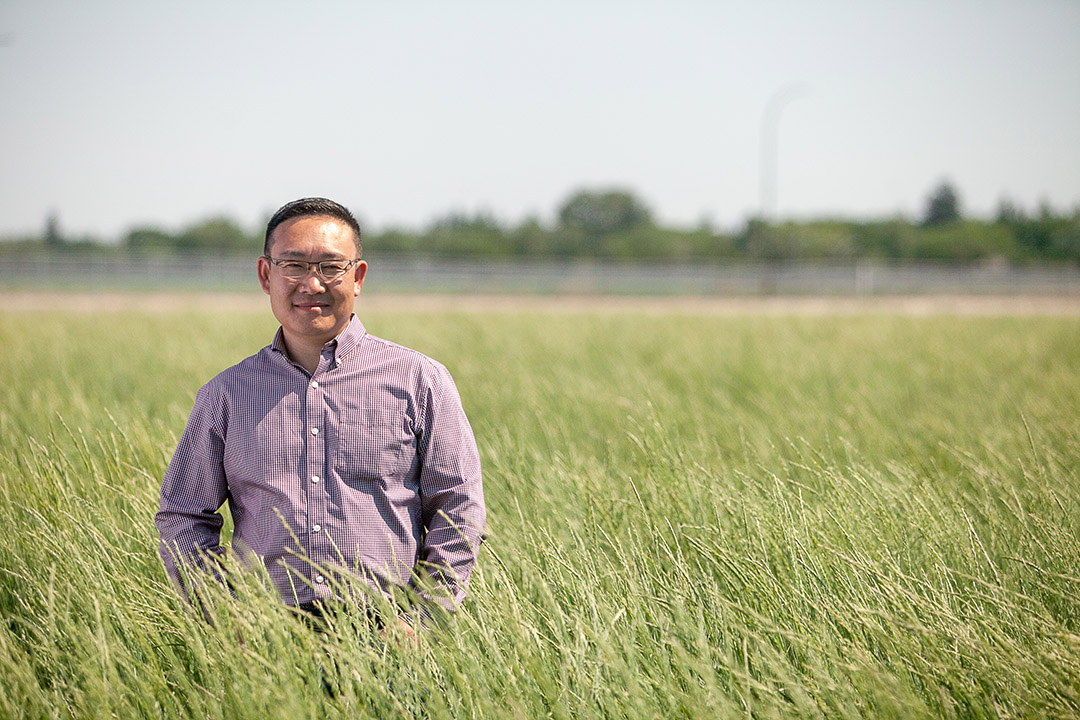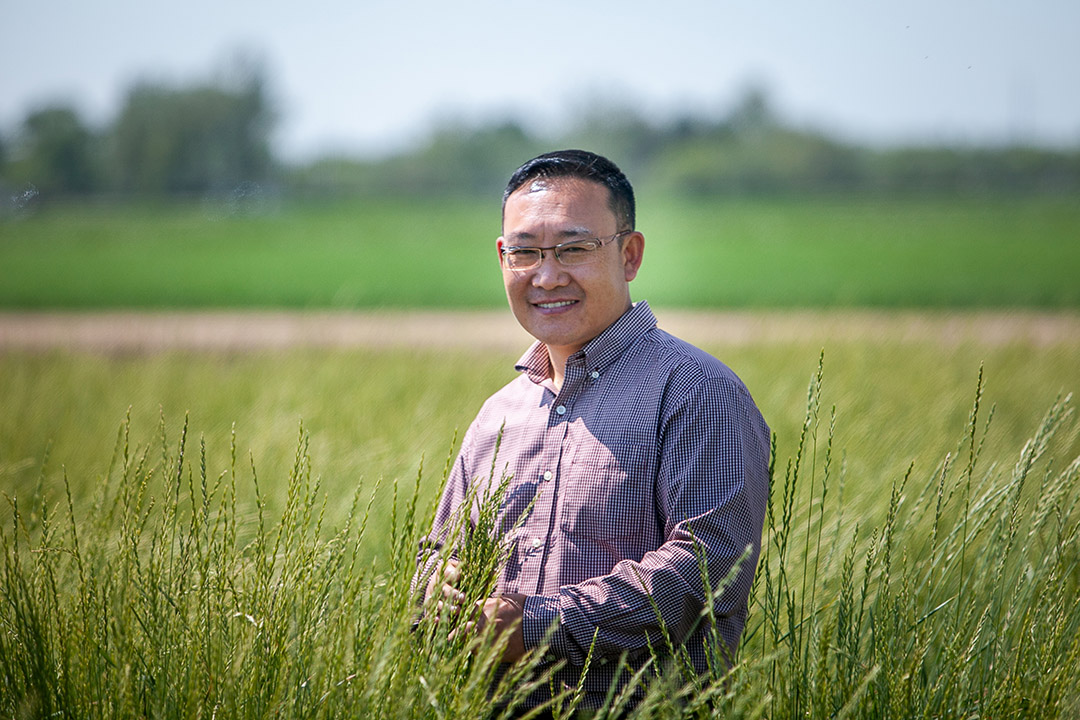
Asian Heritage Month: Forage breeder a research leader at USask
Growing up on the Mongolian Plateau, Dr. Bill Biligetu (PhD) has seen first-hand the effect climate change can have on grasslands. As the Ministry of Agriculture Strategic Research Program (SRP) Chair in Forage Crop Breeding at the University of Saskatchewan (USask), Biligetu is breeding resilient forage varieties adapted for stressful environments.
By Kira GlasscockAfter completing his master’s degree in grassland management at the Inner Mongolia Agricultural University in China, Biligetu came to USask to pursue a PhD. In 2014, Biligetu joined the USask Crop Development Centre (CDC) as a forage breeder.
“USask is well-known for its agriculture research and teaching. World-class crop breeding research is also well-known, and I came here to learn more about plant breeding,” said Biligetu, an associate professor in the College of Agriculture and Bioresources at USask.
Forage crops are a nutritional food source for livestock animals. They also play a vital role in sustainable agricultural land management. Perennial forage crops have important environmental benefits, contributing to soil health, carbon sequestration, and land degradation prevention.
“Perennial forages also reduce the use of chemicals (herbicide, insecticide, and fertilizer), provide wildlife habitat and promote sustainable agriculture systems, especially if we look at it from a long-term perspective,” said Biligetu.

Biligetu’s research focuses on the genetic improvement of perennial forage crops adapted to Western Canada, including alfalfa, sainfoin, hybrid bromegrass and wheatgrass—species widely seeded by cattle and forage producers in Western Canada.
“Perennial forage and pasture systems are important for many livestock producers, and improved varieties help their operations be more profitable,” said Biligetu.
“My main goal is to develop great varieties of forage crops for Saskatchewan and Canadian producers. One of the breeding research goals I believe important is to develop perennial grass/legume varieties highly adapted to low productive land in Western Canada. This includes saline areas (soil with high salt content), drought, and erosion prone regions.
Over the last 10 year, Biligetu has built on the successful forage breeding program at CDC, previously led by Dr. Bruce Coulman (PhD). To date, Biligetu has developed five new forage varieties, the most recent being CDC Salt King, a hybrid wheatgrass variety with high salt tolerance released in 2023.
The success of the forage breeding program at CDC is recognized and supported by several industry and government funding agencies including the Beef Cattle Research Council, the Saskatchewan Alfalfa Seed Growers, the Saskatchewan Cattleman’s Association, the Saskatchewan Forage Seed Growers, Saskatchewan’s Agriculture Development Fund, and the Natural Sciences and Engineering Research Council of Canada.
“I am grateful that many of my forage crop breeding projects have been funded by various funding agencies,” said Biligetu.
When asked what inspired him to pursue a career in grassland agriculture, Biligetu credits his parents and Mongolian culture.
“I was born and raised on the Mongolian Plateau, where my family operates a livestock farm. We have beef cattle, sheep, goats, and horses. My family is a traditional Mongolian nomadic farm, moving year-round from summer pasture to winter grazing site until I was 10 years old. All my university degrees are related to the word ‘grass’,” said Biligetu.
“During my university studies, I also met with many great professors who made a great impact on my future career.”
